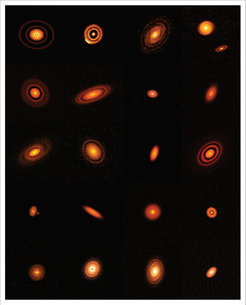Institute for Theoretical Astrophysics (ITA)

The Institute for Theoretical Astrophysics (ITA) at the University of Heidelberg carries out research in cosmology, extragalactic astrophysics, galactic dynamics, star formation, stellar evolution and astrochemistry.

Understanding the formation of stars in galaxies like our Milky Way or in the early universe is the goal of the star formation group at ITA. Stars form by gravoturbulent fragmentation of magnetized interstellar gas clouds. The supersonic turbulence ubiquitously observed in Galactic molecular gas generates strong density fluctuations with gravity taking over in the densest and most massive regions. Collapse sets in to build up stars and star clusters. This process is studied by means of numerical simulations and theoretical model calculations. Planets and planetary systems can build up in the accretion disks around new-born stars.

A further research focus is developing and analyzing theoretical (computational) models of galaxy formation and evolution, with an emphasis on cosmic gas: cosmological gas accretion, the circumgalactic medium, the baryon cycle, and energetic feedback processes. This is studied through numerical simulations run with AREPO, a finite volume hydrodynamics code based on a moving unstructured mesh.
The planet formation group at the Institute for Theoretical Astrophysics was founded in November 2010. The group studies how planets and exoplanets are formed from cosmic dust in protoplanetary disk. We do this with numerical modeling, focusing on: theThe structure, the formation and the evolution of planetary birthplaces (protoplanetary disks); the coagulation, fragmentation and motion of dust aggregates in these disks; the formation of planetesimals (i.e. 1-100 km-size bodies such as comets and asteroids); the runaway and oligarchic growth of planetary embryos out of swarms of planetesimals; tThe N-body interactions between newly formed planets.




